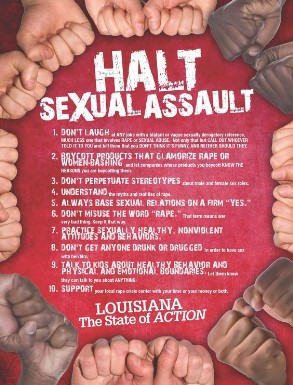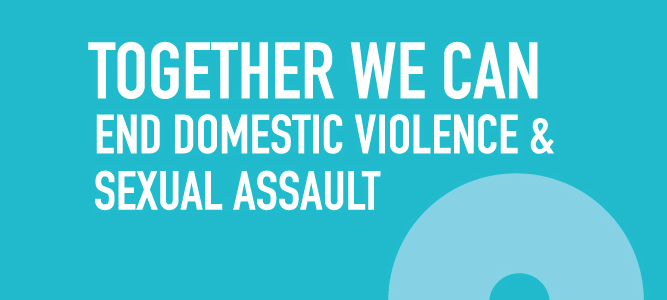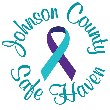References
- Foshee VA, Bauman KE, Ennett ST, Suchindran C, Benefield T, Linder GF. Assessing the effects of the dating violence prevention program “safe dates” using random coefficient regression modeling. Prev Sci. 2005; 6(3):245–258.
- Taylor BG, Stein ND, Mumford EA, Woods D. Shifting boundaries: an experimental evaluation of a dating violence prevention program in middle schools. Prev Sci. 2013; 14(1):64–76.
- Salazar LF, Vivolo-Kantor A, Hardin J, Berkowitz A. A web-based sexual violence bystander intervention for male college students: randomized controlled trial. Journal of Medical Internet Research. 2014; 16(9): e203.
- DeGue S. Evidence-based strategies for the primary prevention of sexual violence perpetration. In Preventing sexual violence on college campuses: lessons from research and practice. 2014; Available from www.notalone.gov/schools/.
- Coker AL, Bush HM, Fisher BS, Swan SC, Williams CM, Clear ER, DeGue S. Multi-college bystander intervention evaluation for violence prevention. American Journal of Preventive Medicine. 2015. Advance online publication. Available from http://www.ajpmonline.org/article/S0749-3797(15)00553-X/abstract.
- Coker AL, Fisher BS, Bush HM, Swan SC, Williams CM, Clear ER, DeGue S. Evaluation of the Green Dot bystander intervention to reduce interpersonal violence among college students across three campuses. Violence Against Women. 2014; 21(12):1507-27.
- Espelage DL, Low S, Polanin JR, Brown EC. Clinical trial of Second Step© middle-school program: Impact on aggression & victimization. Journal of Applied Developmental Psychology. 2015; 37: 52-63.
- Miller E, Tancredi DJ, McCauley HL, Decker MR, Virata MCD, Anderson HA, O’Connor B, Silverman JG. One-year follow-up of a coach-delivered dating violence prevention program: a cluster randomized controlled trial. Am J Prev Med. 2013; 45(1): 108–112.
- Banyard VL, Moynihan MM, Plante EG. Sexual violence prevention through bystander education: an experimental evaluation. J Community Psychol. 2007; 35(4); 463–481.
CDC Resources
- CDC’s Extramural Research Program
- CDC funds universities, medical centers and other outside organizations to conduct research related to IPV prevention.
- Intimate Partner Violence and Sexual Violence Victimization Assessment Instruments for Use in Healthcare Settings[PDF 188KB]
This document is a compilation of existing tools for assessing intimate partner violence and sexual violence victimization in clinical and healthcare settings.
- Measuring Intimate Partner Violence Victimization and Perpetration: A Compendium of Assessment Tools
This compendium provides professionals who address intimate partner violence with easy access to a set of tools with demonstrated reliability and validity for measuring the self-reported incidence and prevalence of intimate partner victimization and perpetration.
- National Sexual Violence Resource Center
The National Sexual Violence Resource Center identifies and disseminates information, resources, and research on all aspects of sexual violence prevention and intervention.
- Sexual Violence Surveillance: Uniform Definitions and Recommended Data Elements[PDF 2MB], Version 2.0.
This document includes the latest information available for standardizing sexual violence surveillance definitions and data elements for policymakers, researchers, public health practitioners, victim advocates, service providers, and media professionals.
- World Report on Violence and Health[PDF 247KB]
This report is the first comprehensive review of violence on a global scale. Chapter 6 provides detailed information on sexual violence, including prevention strategies.


Other Resources
- Bachar K, Koss MP. From prevalence to prevention: Closing the gap between what we know about rape and what we do. Sourcebook on Violence Against Women. Renzetti C, Edleson J, Bergen RK, editors, Thousand Oaks, CA: Sage; 2001.
- Basile KC. A comprehensive approach to sexual violence prevention. New Eng J Med. 2015; 372(24):2350-2352.
- Basile K. Implications of public health policy on sexual violence. Ann N Y Acad Sci. 2003; 989:446–463.
- Casey EA, Lindhorst TP. Toward a multi-level, ecological approach to the primary prevention of sexual assault: prevention in peer and community contexts. Trauma Violence Abuse. 2009; 10: 91–114.
- Centers for Disease Control and Prevention. Preventing sexual violence on college campuses: Lessons from research and practice. 2014. Available from www.notalone.gov/schools/.
- DeGue S, Holt MK, Massetti GM, Matjasko JL, Tharp AT, Valle LA. Looking ahead toward community-level strategies to prevent sexual violence. J Womens Health. 2012; 21(1): 1-3.
- DeGue S, Simon TR, Basile KC, Yee SL, Lang K, Spivak H. Moving forward by looking back: reflecting on a decade of CDC’s work in sexual violence prevention, 2000-2010. J Womens Health. 2012; 21.
- DeGue S, Valle LA, Holt MK, Massetti GM, Matjasko L, Tharp AT. A systematic review of primary prevention strategies for sexual violence perpetration. Aggress Violent Behav. 2014; 19(4): 346-362.
- Foshee V, Bauman KE, Ennett ST, Benefield T, Suchindran C, Linder GF. Assessing the long-term effects of the safe dates program and a booster in preventing and reducing adolescent dating violence victimization and perpetration. Am J Public Health. 2004;94: 619-624.
- Lee D, Guy L, Perry B, Sniffen CK, Mixson SA. Sexual violence prevention. The Prevention Researcher. 2007;14(2):15–20.
- Lonsway KA, Banyard VL, Berkowitz AD, Gidycz CA, Katz JT, Koss MP, Schewe PA, Ullman SE. Rape prevention and risk reduction: review of the research literature for practitioners. January 2009 newsletter. Vawnet.org.
- McMahon P. The public health approach to the prevention of sexual violence. Sexual abuse: a journal of research and treatment. 2000; 12:27–36.
- Miller E, Tancredi DJ, McCauley HL, Decker MR, Virata MC, Anderson HA, Silverman JG. Coaching boys into men: a cluster-randomized controlled trial of a dating violence prevention program. J of Adolesc Health 2012;51(5), 431-438. doi:10.1016/j.jadohealth.2012.01.018
- Morrison S, Hardison J, Mathew A, O’Neil J. An evidence-based review of sexual assault preventive intervention programs. Department of Justice. 2004.
- National Sexual Violence Resource Center. Key Findings From “A Systematic review of primary prevention strategies for sexual violence perpetration” written by Sarah DeGue, et al. 2014. Available from www.nsvrc.org.
- Schewe PA. Interventions to prevent sexual violence. In: Doll L, Bonzo S, Sleet D, Mercy J, Hass E, editors. Handbook of Injury and Violence Prevention. New York, NY: Springer; 2007: 183–201.
- Wathen CN, MacMillan HL. Interventions for violence against women: scientific review. J Am Med Assoc. 2003; 289: 589–600.


